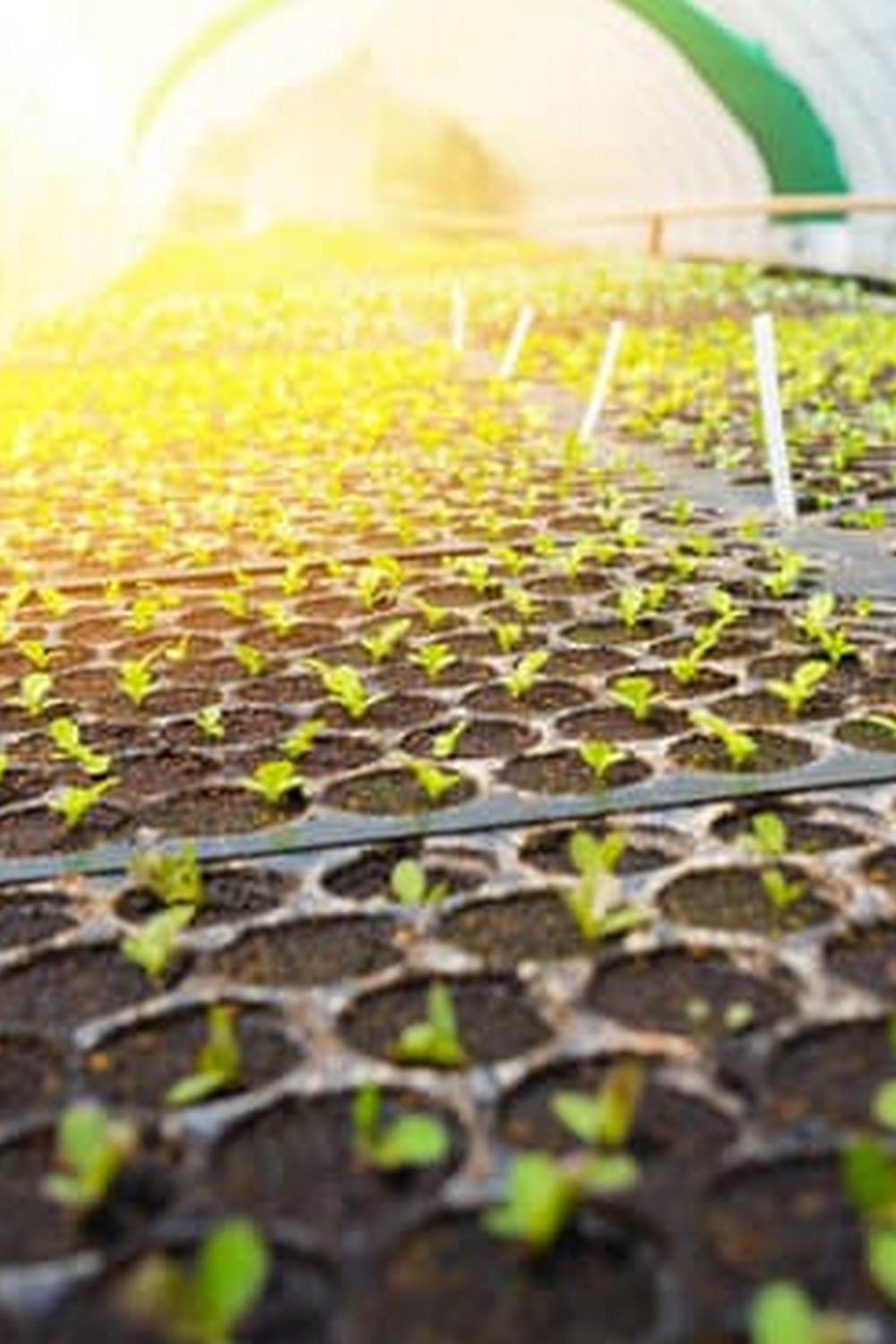Hillside vegetable gardening ideas are gaining popularity among gardeners looking to make the most of their space while also adding a unique challenge to their gardening endeavors. Gardening on a slope can present both challenges and advantages, from soil erosion to improved drainage. In this article, we will explore the ins and outs of hillside vegetable gardening, providing you with tips and techniques to create a successful and productive garden on a hillside.
When considering hillside vegetable gardening, it is crucial to assess the slope properly to understand the unique challenges it presents. From erosion control to water runoff, managing a garden on a hillside requires careful planning and consideration. However, gardening on a slope also offers advantages such as improved sunlight exposure and better air circulation for your plants.
Choosing the right vegetables for hillside gardening is essential for success. Opting for low-maintenance and resilient options will make your gardening experience more manageable and rewarding. Additionally, preparing the soil properly with techniques like erosion control and nutrient management will provide your plants with the best foundation for healthy growth. Stay tuned as we delve into soil preparation tips, planting techniques, watering strategies, pest management, harvesting, and maintenance tips for successful hillside vegetable gardens.
Assessing the Slope
Gardening on a hillside presents unique challenges and advantages that gardeners need to consider before embarking on this endeavor. One of the main challenges is managing erosion, as the slope can lead to soil runoff during heavy rainfalls. This can wash away nutrients, destabilize plant roots, and create uneven moisture levels in the soil. However, with proper planning and implementation of erosion control measures, such as terracing or retaining walls, these challenges can be mitigated.
On the other hand, gardening on a hillside also offers distinct advantages that can benefit the overall health and productivity of your vegetable garden. The slope allows for better drainage, which can prevent waterlogging and root rot in plants.
Additionally, the angle of the hillside provides increased sun exposure for your crops, promoting better growth and yield. Furthermore, planting on a slope can help optimize space utilization in your garden, making it possible to grow more vegetables in a limited area.
Optimizing Sunlight Exposure
When assessing the slope for your hillside vegetable garden, take note of how sunlight hits different parts of the area throughout the day. Plant taller vegetables like tomatoes and corn on the southern-facing side of the slope where they can receive ample sunlight exposure. Meanwhile, reserve shady areas for leafy greens and root vegetables that thrive in partial shade.
Determining Water Drainage
Another crucial factor to consider when working with hillside vegetable gardening is water drainage. Since water naturally flows downhill, make sure to implement proper drainage systems to prevent pooling and oversaturation of soil around your plants. Consider incorporating swales or French drains alongside terraced beds to manage excess water runoff effectively. By understanding these aspects of gardening on a hillside, you can make informed decisions to create a thriving vegetable garden despite the challenging terrain.
Choosing the Right Vegetables for Hillside Gardening
When it comes to hillside vegetable gardening, selecting the right vegetables is crucial for success in such a unique environment. Opting for low-maintenance and resilient options can make a significant difference in the productivity of your garden. Some vegetables are better suited to handle the challenges that come with gardening on a slope, such as soil erosion and uneven water distribution.
One excellent choice for hillside vegetable gardening is root vegetables like carrots, radishes, and potatoes. These crops have deep root systems that can help stabilize the soil on a slope while also being relatively low-maintenance. Additionally, leafy greens such as spinach, kale, and Swiss chard are great options because they can thrive in various conditions and provide continuous harvest throughout the season.
Another consideration when choosing vegetables for hillside gardening is to look for those that are resistant to pests and diseases common in such environments. For example, beans, peas, and tomatoes have natural defenses against certain insects and fungal infections. By incorporating these resilient vegetables into your garden plan, you can reduce the risk of issues that may arise on a hillside.
| Vegetable | Characteristics |
|---|---|
| Carrots | Deep root system for stabilizing soil |
| Kale | Resilient to various conditions |
| Tomatoes | Natural defense against pests and diseases |
Incorporating a variety of low-maintenance and resilient vegetables into your hillside garden can not only improve the overall health of your plants but also make maintenance more manageable. By carefully selecting the right crops based on their adaptability to sloped terrain and resistance to common issues, you can create a thriving vegetable garden on a hillside that yields bountiful harvests throughout the growing season.
Be sure to consider these factors when planning your hillside vegetable garden to set yourself up for success from the start.
Soil Preparation Tips for Hillside Vegetable Gardening
Hillside vegetable gardening is a rewarding and innovative way to make the most of your garden space. However, gardening on a slope comes with its own set of challenges, particularly related to soil erosion and nutrient management. To address these issues effectively, it is essential to take proactive steps to prepare the soil before planting your vegetables.
One of the primary concerns when it comes to hillside vegetable gardening is erosion control. Soil erosion can be a significant problem on sloped terrain, leading to loss of topsoil and essential nutrients. To combat erosion, consider implementing techniques such as building terraces or retaining walls to create flat planting areas. Additionally, adding mulch or ground cover plants can help stabilize the soil and prevent runoff during heavy rainfall.
In addition to erosion control, proper nutrient management is crucial for the success of your hillside vegetable garden. Due to the slope, nutrients in the soil are more prone to leaching away with water flow.
To prevent nutrient depletion, incorporate organic matter into the soil, such as compost or aged manure, before planting your vegetables. Regularly test the soil pH levels and adjust as needed to ensure that your plants have access to essential nutrients for healthy growth and abundant yields.
| Erosion Control | Nutrient Management |
|---|---|
| Consider building terraces or retaining walls | Incorporate organic matter like compost into the soil |
| Add mulch or ground cover plants for stability | Regularly test soil pH levels |
Planting Techniques for Hillside Gardening
When it comes to hillside vegetable gardening, choosing the right planting techniques is crucial for maximizing space and ensuring proper growth of your crops. One effective method is terracing, which involves creating leveled areas on the slope to plant vegetables. This not only helps in preventing soil erosion but also allows for better water retention and drainage. Consider using sturdy materials such as stone or timber to build terraces that can hold the soil in place.
Another popular option for hillside vegetable gardening is raised beds. By constructing elevated planting areas, you can control the quality of the soil more easily and prevent runoff during heavy rainfalls. Raised beds also provide better aeration for plant roots and make it easier to maintain the garden by reducing weed growth. You can use a variety of materials like wood, concrete blocks, or even recycled materials to create raised beds that suit your slope’s needs.
In addition to terracing and raised beds, vertical gardening ideas are becoming increasingly popular among hillside gardeners. Vertical structures such as trellises, arbors, or hanging baskets can be used to grow climbing vegetables like tomatoes, cucumbers, or beans.
This not only saves space but also creates a visually appealing garden design on a sloped terrain. Utilize these innovative planting techniques in your hillside vegetable garden to make the most out of your available space while ensuring healthy growth for your crops.
Watering Strategies for Hillside Vegetable Gardens
Hillside vegetable gardening presents unique challenges when it comes to watering due to the slope of the land. In this section, we will explore different strategies and techniques to ensure that your plants receive adequate moisture while preventing erosion and runoff.
Drip Irrigation Systems
One of the most efficient ways to water plants on a hillside is by using drip irrigation systems. These systems deliver water directly to the base of each plant, minimizing waste and ensuring that the roots receive consistent moisture. By installing a drip irrigation system, you can conserve water, reduce weed growth, and promote healthy plant growth in your hillside garden.
Rainwater Harvesting
Another eco-friendly way to water your hillside vegetable garden is by harvesting rainwater. You can set up rain barrels or cisterns to collect rainfall from your roof and store it for future use in your garden. Rainwater is free of chemicals like chlorine found in tap water, making it an ideal choice for watering vegetables. Additionally, utilizing rainwater helps reduce the demand on local water sources during dry periods.
Drainage Considerations
Proper drainage is crucial for hillside vegetable gardens to prevent erosion and waterlogging. To improve drainage on a slope, consider incorporating swales or French drains to redirect excess water away from plants. Raised beds can also help with drainage by allowing excess water to flow downhill without saturating the soil around your vegetables. By implementing effective drainage solutions, you can maintain healthy plants and prevent damage caused by water accumulation on the hillside.
By utilizing drip irrigation systems, rainwater harvesting techniques, and implementing proper drainage considerations in your hillside vegetable garden, you can ensure that your plants thrive despite the challenges of gardening on a slope. These strategies not only help conserve resources but also promote sustainable practices in your garden for long-term success.
Pest and Disease Management for Hillside Vegetable Gardens
When cultivating a hillside vegetable garden, there are various challenges to consider, one of which includes pest and disease management. As with any garden, pests and diseases can quickly take a toll on your crops if not properly addressed. However, there are natural remedies and prevention methods that can help maintain the health and vitality of your hillside vegetable garden.
To effectively manage pests and diseases in your hillside vegetable garden, it is essential to first identify the common issues that may arise. Some typical pests to look out for include aphids, caterpillars, slugs, and snails. These pests can damage your plants by munching on leaves or fruit, ultimately affecting the overall yield of your garden. Meanwhile, diseases such as powdery mildew, blight, and root rot can also pose significant threats to the well-being of your vegetable plants.
To combat these issues organically, consider implementing the following natural remedies in your hillside vegetable garden:
- Introduce beneficial insects like ladybugs or lacewings that feed on harmful pests.
- Use neem oil or insecticidal soap to deter common pests without harming beneficial insects.
- Install physical barriers like copper tape to prevent slugs and snails from reaching your plants.
Additionally, practicing good gardening habits such as crop rotation, proper spacing between plants for adequate airflow, and maintaining healthy soil through composting can also help prevent pest infestations and diseases in your hillside vegetable garden.
By being proactive in pest and disease management through natural remedies and prevention methods, you can ensure a bountiful harvest from your hillside vegetable garden while minimizing the need for harmful chemicals that could negatively impact the environment. Stay vigilant in monitoring your plants for signs of trouble so that you can address any issues promptly and sustainably maintain the health of your crops throughout the growing season.
Harvesting and Maintenance Tips for Successful Hillside Gardening
Hillside vegetable gardening can be a rewarding and efficient way to grow your own produce, even in challenging terrain. By following the right strategies and techniques, you can make the most of your hillside space and increase your garden’s productivity. Maximizing space is key when gardening on a slope, and careful planning from the initial stages can lead to a bountiful harvest.
One of the essential aspects of maintaining a successful hillside garden is proper harvesting techniques. Regularly harvesting ripe vegetables not only ensures that you enjoy the fruits of your labor at their peak flavor but also encourages further production from the plants. Be sure to check your garden frequently for ready-to-pick crops to prevent overripening or spoilage.
In addition to harvesting, ongoing maintenance plays a crucial role in the success of a hillside vegetable garden. Regular weeding, watering, and pest control are essential tasks to keep your plants healthy and thriving.
By staying attentive to your garden’s needs and making adjustments where necessary, you can create an abundant and flourishing hillside vegetable garden that brings joy and sustenance throughout the growing season. Don’t hesitate to experiment with different planting techniques and vegetable varieties to discover what works best for your unique hillside landscape.
Frequently Asked Questions
What Vegetables Grow Best on a Hill?
Some vegetables that grow best on a hill include potatoes, beans, peas, and squash. These crops have deep root systems that can help prevent erosion on sloped terrain while also thriving in well-draining soil.
Can You Grow a Vegetable Garden on a Slope?
It is possible to grow a vegetable garden on a slope, but it requires some extra care and planning. One important consideration is creating terraces or raised beds to help prevent soil erosion and water runoff. Ensuring proper irrigation and selecting suitable crops for the specific slope are also crucial.
What Crops Grow on a Slope?
Various crops can thrive on a slope depending on the specific conditions of the land. For example, fruit trees like apples and pears can grow successfully on slopes with good drainage.
Additionally, vine crops such as grapes can be well-suited for sloped areas, benefiting from adequate airflow and sunlight. Herbs like lavender and rosemary can also be grown effectively on slopes due to their adaptability to well-drained soil conditions.

If you’re looking to get into vegetable gardening, or are just looking for some tips on how to make your current garden better, then you’ve come to the right place! My name is Ethel and I have been gardening for years. In this blog, I’m going to share with you some of my best tips on how to create a successful vegetable garden.





